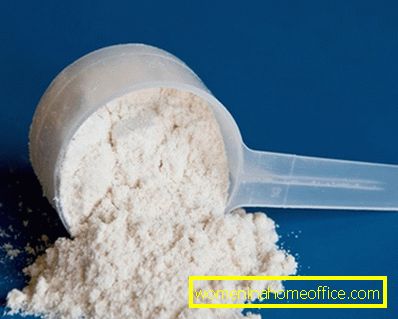What is maltodextrin
Do you pay attention to the composition of the products that you buy every day in the store? If products for adults rarely cause concern, products that are permitted or intended for children require close attention.
It is known that babies are not recommended to give this or that food until a certain age. Mothers who have breast milk try to feed the baby natural as long as possible, delaying the moment of transition to the mixture. Over time, new dishes are introduced into the baby’s diet, including special infant formula mixes. On the packaging you can find the word "meltodextrin". What is it, what are the characteristics of the additive, as well as useful and harmful qualities?
Maltodextrin - what is it, is it natural or synthetic? This substance is formed by special processing of starch, mainly corn or rice, as well as potato or wheat. Starch undergoes heat treatment, after which a carbon compound is formed, consisting of maltose and dextrins. Maltose is a natural disaccharide, better known as malt sugar. Dextrin is a saccharide secreted directly from starch. The result is an absolutely natural additive without impurities.
The resulting substance is additionally dried to the formation of a powder mass of a pale cream color. Maltodextrin is sweetish to taste (20% less than sugar). Well soluble in water.
Where is it used?

Food supplement maltodextrin is used in almost all segments of the food industry. The sweetness of the substance led to widespread use in the manufacture of confectionery and all kinds of sweets. It is found in bakery products, in the manufacture of pastes, sauces, seasonings. Can be found in the list of the composition of dairy products, ice cream, drinks, fast food. Two specific areas of the food industry: diet and baby food.
The edible additive is also used in the manufacture of drugs and dietary supplements (dietary supplements), as well as in sports nutritional mixtures. Another area is cosmetic products: from skin care creams and decorative cosmetics to talcum and toothpaste.
Why is the additive so popular that it is so special? Can maltodextrin in baby food be harmful?
Features of maltodextrin

Manufacturers praised the quality of this natural substance. So the food additive maltodextrin has the following properties:
- absorption by the body is easier than starch in its pure form;
- carbohydrate compound improves the microflora of the digestive tract;
- Effectively cleanses the body of toxins, salts of heavy metals, radionuclides;
- helps regulate cholesterol levels;
- 100% natural supplement;
- hypoallergenic;
- replenishes energy reserves;
- increases the satiety of food;
- acts as a thickener;
- it is well dissolved, without forming lumps;
- prolongs the shelf life of the product;
- interacts well with other components of the composition;
- stabilizes emulsions;
- improves the appearance, taste and texture of the product;
- has moderate sweetness;
- relatively inexpensive food supplement.
Are there any hazardous properties?

The list of positive qualities of the food additive is impressive. But some moms still express concerns about the substance. Maltodextrin in baby food can harm the health of the baby:
- the child has celiac disease (products with the presence of molodextrin from wheat starch are contraindicated);
- Corn Maltodextrin is dangerous for allergies to corn;
- contraindicated in diabetes mellitus;
- the glycemic index (an indicator of the effect of the product on blood sugar levels after consumption) is two times higher than that of granulated sugar;
- Constantly and in large quantities can lead to the appearance of excess weight in the baby;
- depletes own reserves of useful substances;
- the raw material for the preparation of the additive can be a genetically modified product;
- excessive amounts of a substance can affect the healthy intestinal microflora, making the body more vulnerable to infections.
As you can see, the harm of a food additive can be exceptional. Therefore, before you transfer the baby to baby food, you need to make sure that there are no contraindications. It is also recommended to be more attentive to the choice of infant food mixes. For example, wheat maltodextrin is more common in Chinese-made products, while in European mixtures it is mainly used an additive from corn or potato starch.
From the foregoing, we can conclude the following: in moderate amounts, maltodextrin does not harm the body, but may, on the contrary, contribute to the improvement of digestion. An important factor in the safety of the additive remains the quality of the raw materials from which it is produced.